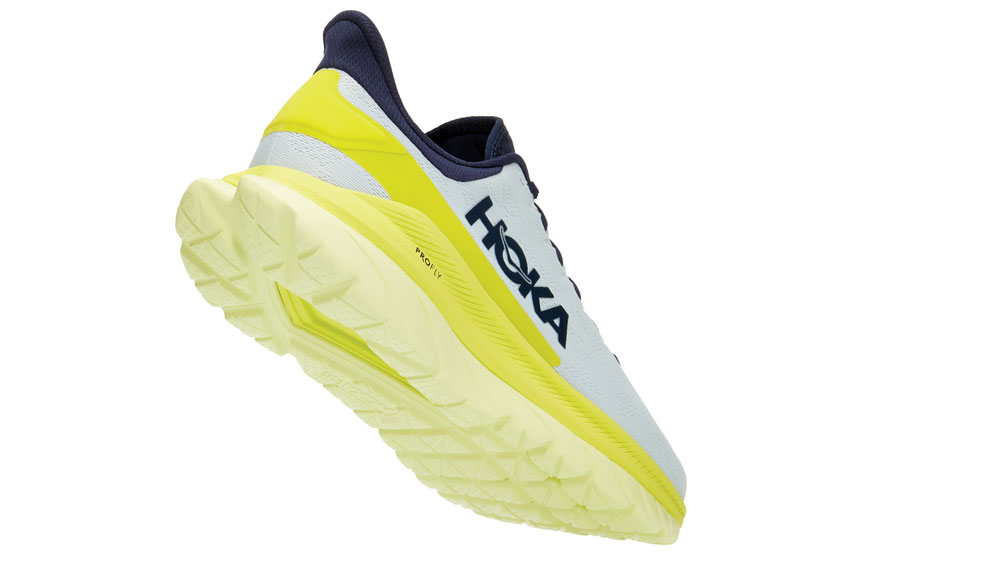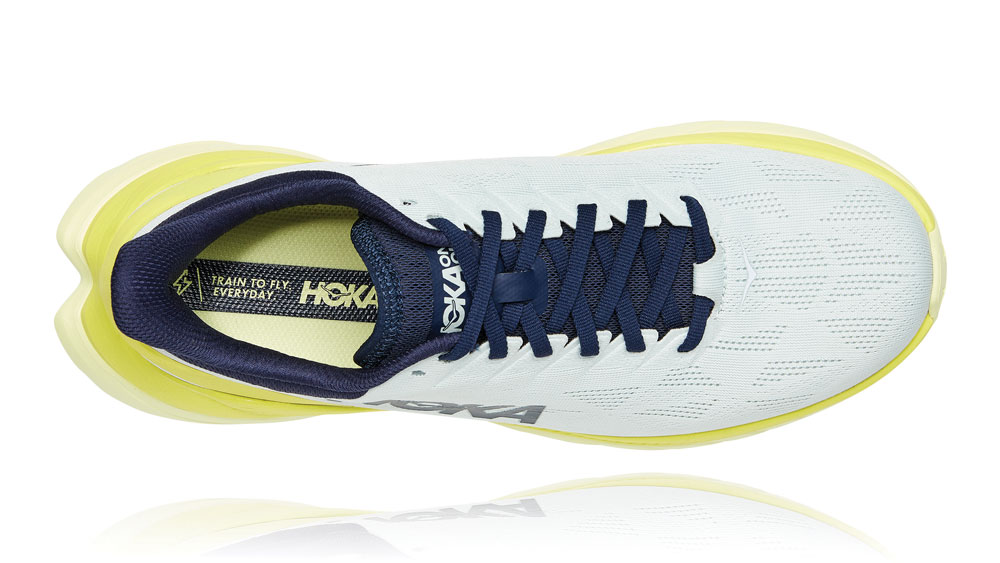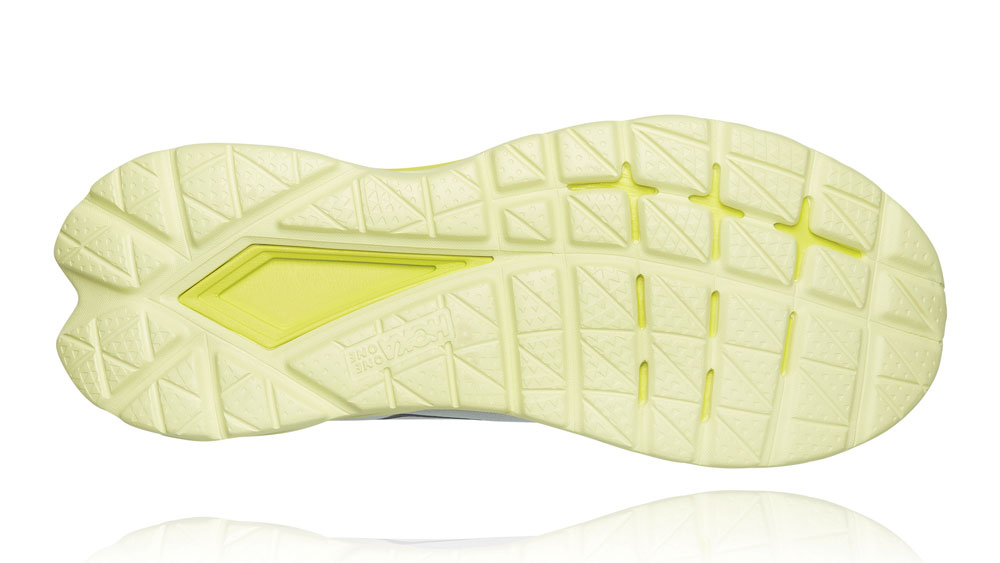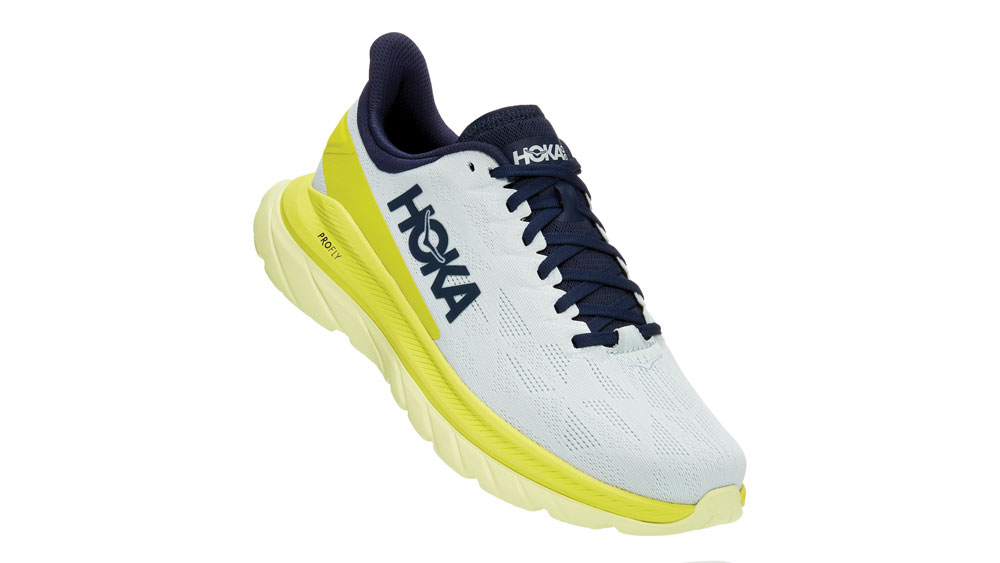Our Verdict
The Hoka Mach 4 is a brilliantly versatile shoe with a smooth, speedy and comfortable ride that works well for long, short, fast and slow runs alike.
For
- Comfortable and fast ride
- Versatile option for all your training
- Lightweight
Against
- Lack of a full outsole reduces durability
You can trust Coach
There are two shoes that have stood out in recent years as consummate all-rounders. The first is the Nike Pegasus Turbo, of which there have been two editions both offering a cushioned, quick ride. The second is the Saucony Endorphin Speed, which paired a nylon plate with Saucony’s bouncy PWRRUN PB foam to produce a similar level of performance as a carbon racer while also being comfortable enough to use for daily training.
Despite being among the best running shoes, both are tricky to get hold of. Much to the dismay of its many fans, Nike appears to be ending the Pegasus Turbo line at the second shoe (this could change, fingers crossed). Meanwhile the Endorphin Speed is often sold out, such is its popularity. Both shoes also cost more than £150.
The Hoka One One Mach 4 matches these two stand-outs with a comfortable and quick ride that can handle a variety of training, and it would also be suited to longer races like half marathons and marathons. That it costs £125 and appears to have fewer stock issues makes it an exciting release indeed.
The Mach line has primarily been for fast training, but this fourth edition has a softer feel upon landing than its predecessors, improving its comfort on easy runs. The shoe has two layers of foam in the midsole, with a softer upper layer to create that cushioned ride, while the bottom layer is made from a rubberised foam for improved durability.

That rubberised foam is also used for the outsole, and Hoka has opted not to put a layer of rubber on the shoe. So far the outsole has gripped well for me, but I do have concerns about its durability without a full rubber layer to protect the midsole.

The shoe also uses Hoka’s ProFly design, which accentuates softer foam in the back half to cushion your landings, then firms up at the front of the shoe to add more responsiveness to your toe-off. There’s a rocker to roll you through your foot strike, while heelstrikers are aided by the extended swallowtail on the back of the shoe, which is designed to get you off your heel and through your foot strike efficiently.
I did not like the swallowtail in Hoka’s Carbon X2 shoe – it got in the way on easy runs – but it’s less pronounced in the Mach 4 and doesn’t take anything away from the ride. I’m not sure it’s adding much, and I say that as a heelstriker, but the transition from heel to toe is smooth.
The Mach 4 has a standard engineered mesh upper that is snug around the toe box. I have narrow feet and found the shoe was true to size, and it was easy to get a tight, locked-down fit around the midfoot. If you have very wide feet or prefer a roomy toe box, you might want to try a half size up. For reasons known only to Hoka, the laces on the shoe are astonishingly long.
I’ve used the Mach 4 for a mix of runs, including short easy efforts, a half marathon at an easy pace, and a steady 20-miler (32km), along with a speed session including some short hill reps. It’s handled everything I’ve thrown at it, mostly with aplomb. It’s comfortable and protective on easy efforts, but not so squishy that you feel like you have to work extra hard to hold a fast pace.

The lightness of the shoe certainly helps on the speed front:the UK 9 I wore weighed just 236g. Given the high stack of the Mach 4 that’s impressive.
There are only two areas where I’m not completely sold on the shoe. The first is for all-out speed work and short races, where you will benefit from using a racier model, perhaps one with a carbon plate. Although the Mach 4 was fine for my session mixing 3km reps and hill sprints, I’d prefer something even speedier on my foot on the track for 400m reps, for example.
It’s not awful for that kind of running and if you stick to owning one shoe at a time rest assured you can go all out in the Mach 4. However, if you use it alongside another shoe my choice would be a proper racer, like Hoka’s Rocket X, or any of the excellent carbon plate shoes available now.
My other concern is durability. That rubberised outsole is unlikely to handle as much mileage as a full rubber covering. Even after 80km I can see the pattern has worn off some high-impact areas: between the heel and midfoot where I land and on the front of the shoe at my toe-off point. I don’t think the shoe will fall apart any time soon, but you might start to lose grip after a few hundred kilometres and I don’t expect it to last past 800km.

The Pegasus Turbo was more durable (as long as you didn’t rip the upper off the midsole, which was an occasional problem for some), while the Endorphin Speed is faster than the Mach 4, if a little less comfortable on easy days.
However, despite those small caveats the Mach 4 is still one of the best all-rounders, and it is more widely available and cheaper than the other top options. If you’re looking for a do-it-all shoe, or a versatile training option to pair with a racer, then it’s certainly a worthwhile purchase.

Nick Harris-Fry is a journalist who has been covering health and fitness since 2015. Nick is an avid runner, covering 70-110km a week, which gives him ample opportunity to test a wide range of running shoes and running gear. He is also the chief tester for fitness trackers and running watches, treadmills and exercise bikes, and workout headphones.


